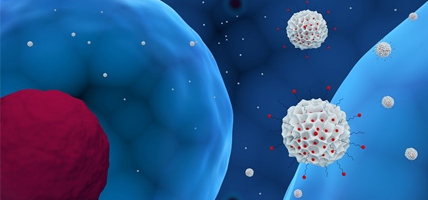


The nanotechnology christened as molecular nanotechnology. In the year 1974, appellation nano-technology was counterfeit by Norio Taniguchi. The first intellection was conferred in 1959 by the prominent physics professor, Dr Richard P. Feynman. In 1981, the gimmick of scanning tunnelling microscope and revelation of fullerence (an allotrope of carbon) in 1985 bulge to the emanation of nanotechnology. It is engineering, technology and science functional system escort at an atomic level or manipulating on a nanoscopic scale (supermolecular scale) which about 1 to 100 nanometers. A nanometer is 1 billionth of a meter approximately the width of 3 to 4 atoms. The human hair is about 25,000 nanometers wide on average.
Nanotechnology is subsumed field of organic chemistry, semiconductor physics, molecular engineering, microfabrication, molecular biology, science as contrastive as a science of surface. Few nanotech products applications we discuss below:
1. Nanorods: Nanorods are nanostructures with the dimension range from 1-100 nm. They may be made from metals or semiconductor material. In the production of nanorod of different sides & length combination of ligands act as control agents. Nonords are potentially used in different display based technologies, biomedical imaging, drug delivery, photothermal therapy and microelectromechanical systems (MEMS).
2. Nanobots: Nanobots are robots, nanoid or machines of size 50–100 nm. Nanobots can be assigned or programmed to carry out particular tasks at the molecular level. They have a number of applications and as the technology further develops at full scale. They are been used in as DNA probes, Gene therapy, surgery, delivery vehicles for drugs to cells, cell imaging materials, and sensing devices.
3. Carbon Nanotubes: It is the allotropes of carbon with cylindrical nanostructures. The carbon nanotubes are a member of the fullerene structure family. The name derived from their long, hollow, structure with the walls formed by one-atom-thick sheets of carbon called as graphene used in the transistors, electric cables and wires, solar cells, fabrics, and nanocrystalline material such as tungsten carbide and titanium etc.
The nano-technology is potential and futuristic applications in the development of hundreds of commodities including medical, cosmetics, sports, equipment and textiles. The advance developments of nanotechnology are being used as biosensor, drug delivery systems, health & medical facilities and environmental management. The nanoparticles, magnetic particle and microspheres are popular components of nanotechnology research and use.
1. Nanoparticle: Nanoparticles, also known as nanopowder, nanoclusters or nanocrystal are a particle of nano-size with dimension less than 100 nm with surrounding interfacial layer. Nanoparticles exist in nature and also man-made. Based on material there are nanoparticles of metals, pure carbon-based compounds, ceramics, semiconductor material, various polymers and those existing in biological made of lipids. Nanoparticles have defined particle size and surface properties. The important application of nanoparticles remains in drug delivery as they allow the controller to manage delivery or targeting of drug to sites. Beside it, nanoparticles have application in tumour targeting, gene delivery, as a vaccine adjuvant, oral delivery of peptides and proteins, Nanoparticle to epithelial cells in the GI tract using ligands and others. Tree main class of nanoparticles include magnetic nanoparticles and, microspheres.
2. Magnetic Particles: Magnetic nanoparticles or nanobeads are particles of 50–200 nanometers made of iron, nickel and cobalt. Magnetic nanoparticles can be collected or moved under the influence of the magnetic field. Their surface is covered with a functionally active chemical component. For biological use magnetic nanoparticles are coated with non-toxic and non-immunogenic material. Due to their biocompatibility, there are popular in various applications.
3. Microspheres: Microspheres spherical hollow or solid particles with diameters ranging from 1 to 1000 μm. They are made from materials, including glass, polyethene, ceramics, polymers, and metals; but mostly prepared from biodegradable polymers. Non- biodegradable polymer like Polymethyl methacrylate (PMMA), Acrolein, Glycidyl methacrylate, and epoxy polymers. Microspheres
The biodegradable microsphere is made of polymers like Lactides, Glycolides and their copolymers, Poly alkyl cyanoacrylates. Natural microspheres polymers are made of Proteins (Albumin, Collagen and Gelatin) and Carbohydrates (Carrageenan, Chitosan and Starch). Microspheres are monolithic-type (matrix-type) and reservoir-type (capsular).
Applications of microspheres include in vaccine delivery, in antigen release, monoclonal antibodies mediated microspheres, imaging, Topical porous microspheres and others
Nanotechnology has a bright future with eminence possibilities in future such as-
1. Nanotechnology may make it possible to manufacture lighter, stronger and programmable material that requires less energy to produce than conventional materials.
2. It promises good fuel efficiency for vehicles, ships, air crafts and space rockets.
3. The future of nanotechnology, include the use of nanorobotics. These nanorobots have the potential to take human tasks that human never could complete. The rebuilding of the ozone layer could potentially be able to be performed.
4. There would be an entire nanosurgical field to cure everything from natural ageing, diabetes, bone spurs.
5. There would be almost nothing that could not be repaired with the introduction of nanosurgery.
For more than 20 years of basic nanoscience, research applications are being delivered in nanotechnology’s consent to benefit society. It is helping considerable improvement and revolutionizing technologies and industries, transportation, medicine, homeland, energy, food safety, dentistry, and environmental science.
